Utilizing chemo-mechanical oscillations to mimic protocell behavior in manufactured microcapsules
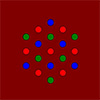 Engineers utilize signaling chemicals that replicate 'cell communication' to form capsule clusters.
Engineers utilize signaling chemicals that replicate 'cell communication' to form capsule clusters.
Oct 6th, 2022
Read more
 Subscribe to our Biotechnology News feed
Subscribe to our Biotechnology News feed
 Engineers utilize signaling chemicals that replicate 'cell communication' to form capsule clusters.
Engineers utilize signaling chemicals that replicate 'cell communication' to form capsule clusters.
Oct 6th, 2022
Read more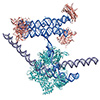 Scientists use RNA origami sponges and CRISPR technology to improve production of valuable biochemicals.
Scientists use RNA origami sponges and CRISPR technology to improve production of valuable biochemicals.
Oct 5th, 2022
Read more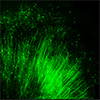 Researchers have developed a customizable, RNA-based platform to target cells rather than genes. CellREADR enables scientists to add any protein to a designated cell type.
Researchers have developed a customizable, RNA-based platform to target cells rather than genes. CellREADR enables scientists to add any protein to a designated cell type.
Oct 5th, 2022
Read more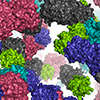 A milestone report proposes a new technique for modeling molecular life with computers. The advance promises new insights into the fundamental biology of a cell, as well as faster and more precise treatment of human disease.
A milestone report proposes a new technique for modeling molecular life with computers. The advance promises new insights into the fundamental biology of a cell, as well as faster and more precise treatment of human disease.
Oct 4th, 2022
Read more Chemists succeed in taking a key step towards the production of sustainable chemicals in living microfactories.
Chemists succeed in taking a key step towards the production of sustainable chemicals in living microfactories.
Sep 29th, 2022
Read more Chemical modification of silk proteins molded into shapes and films makes them repel water better than nonstick coatings available today.
Chemical modification of silk proteins molded into shapes and films makes them repel water better than nonstick coatings available today.
Sep 23rd, 2022
Read more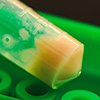 Engineered living materials promise to aid efforts in human health, energy and environmental remediation. Now they can be built big and customized with less effort.
Engineered living materials promise to aid efforts in human health, energy and environmental remediation. Now they can be built big and customized with less effort.
Sep 22nd, 2022
Read more The devices do not require any electronics to light up, making them an ideal choice for building soft robots that explore the deep sea and other dark environments, researchers said.
The devices do not require any electronics to light up, making them an ideal choice for building soft robots that explore the deep sea and other dark environments, researchers said.
Sep 21st, 2022
Read more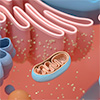 Targeting mitochondria directly could improve the efficacy of a variety of drug therapies and reduce side effects.
Targeting mitochondria directly could improve the efficacy of a variety of drug therapies and reduce side effects.
Sep 20th, 2022
Read more A new study shows that amino acid, sulfotyrosine (sTyr), a mutant of the standard amino acid tyrosine, is a key building block to program living cells that express therapeutic proteins. It could potentially allow cells to serve as sensors that monitor their environments and respond with the necessary treatment.
A new study shows that amino acid, sulfotyrosine (sTyr), a mutant of the standard amino acid tyrosine, is a key building block to program living cells that express therapeutic proteins. It could potentially allow cells to serve as sensors that monitor their environments and respond with the necessary treatment.
Sep 19th, 2022
Read more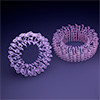 Three new papers show how machine learning can accelerate solutions for protein design challenges.
Three new papers show how machine learning can accelerate solutions for protein design challenges.
Sep 15th, 2022
Read more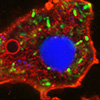 Scientists have harnessed the potential of bacteria to help build advanced synthetic cells which mimic real life functionality.
Scientists have harnessed the potential of bacteria to help build advanced synthetic cells which mimic real life functionality.
Sep 15th, 2022
Read more A new, multiparameter approach may lead to a blood test that will diagnose cancer with unprecedented accuracy.
A new, multiparameter approach may lead to a blood test that will diagnose cancer with unprecedented accuracy.
Sep 10th, 2022
Read more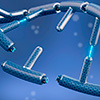 Researchers have discovered that the motion of chromatin, the material that DNA is made of, can help facilitate effective repair of DNA damage in the human nucleus - a finding that could lead to improved cancer diagnosis and treatment.
Researchers have discovered that the motion of chromatin, the material that DNA is made of, can help facilitate effective repair of DNA damage in the human nucleus - a finding that could lead to improved cancer diagnosis and treatment.
Sep 3rd, 2022
Read more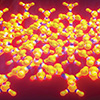 Scientists report three crystal structures of periodic rippled beta sheets, a novel protein structure with potential applications in biomedicine and materials science.
Scientists report three crystal structures of periodic rippled beta sheets, a novel protein structure with potential applications in biomedicine and materials science.
Sep 2nd, 2022
Read more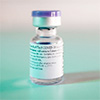 Two software platforms, one for vaccines and one for cancer treatments, help organize and optimize the production processes at BioNTech today.
Two software platforms, one for vaccines and one for cancer treatments, help organize and optimize the production processes at BioNTech today.
Sep 1st, 2022
Read more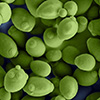 Scientists have developed a computer model that can predict how fast enzymes work, making it possible to find the most efficient living factories, as well as to study difficult diseases.
Scientists have developed a computer model that can predict how fast enzymes work, making it possible to find the most efficient living factories, as well as to study difficult diseases.
Aug 31st, 2022
Read more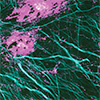 Separating densely packed molecules before imaging allows them to become visible for the first time.
Separating densely packed molecules before imaging allows them to become visible for the first time.
Aug 29th, 2022
Read more